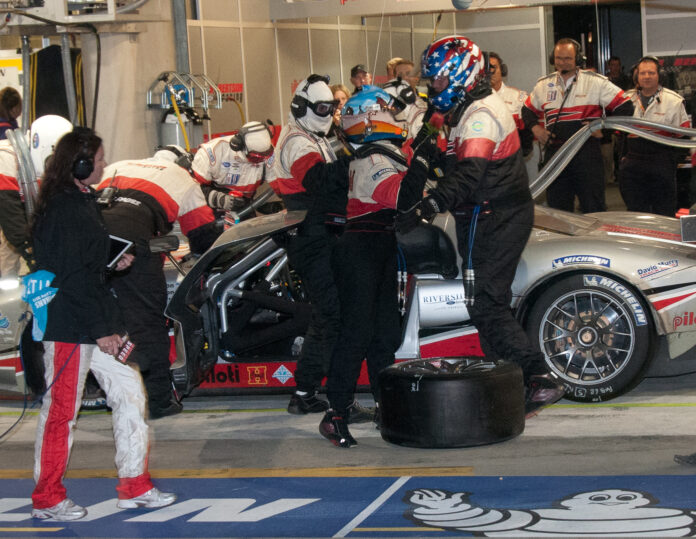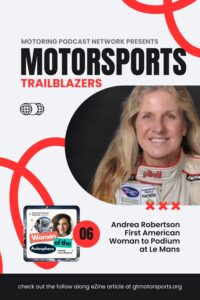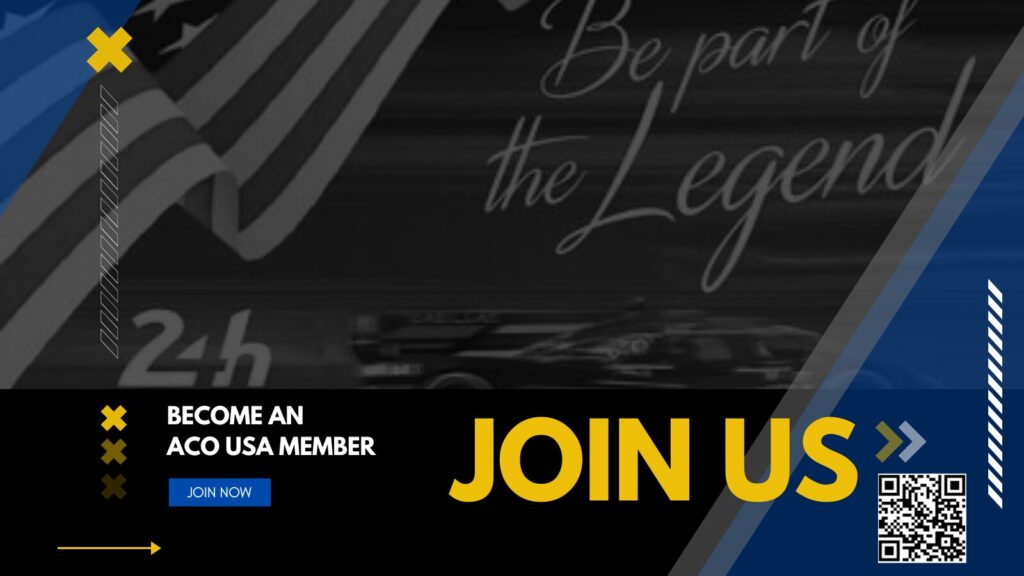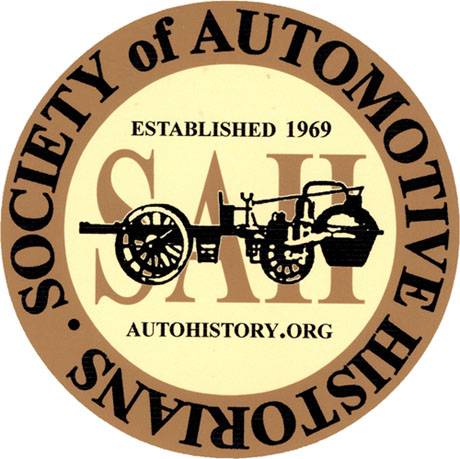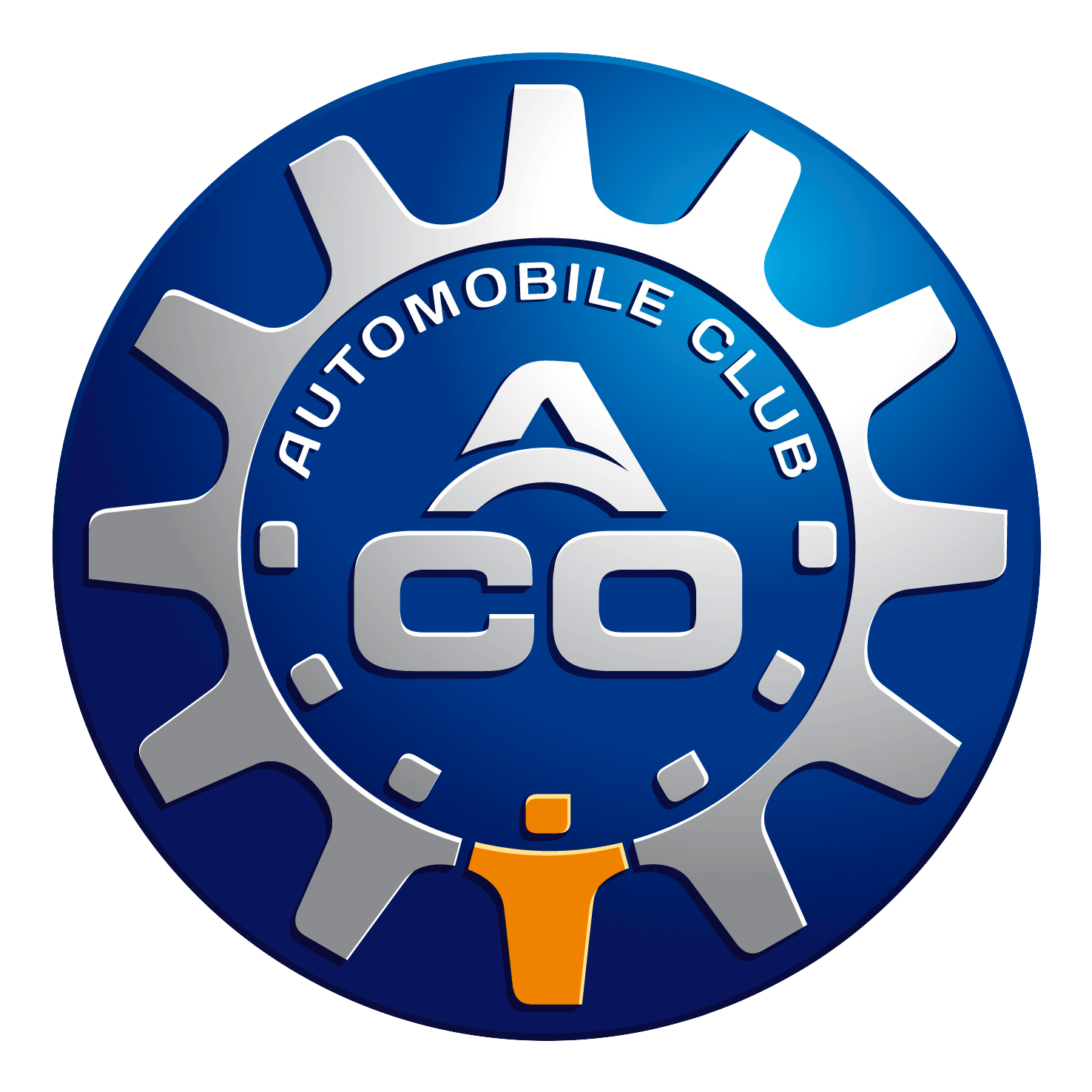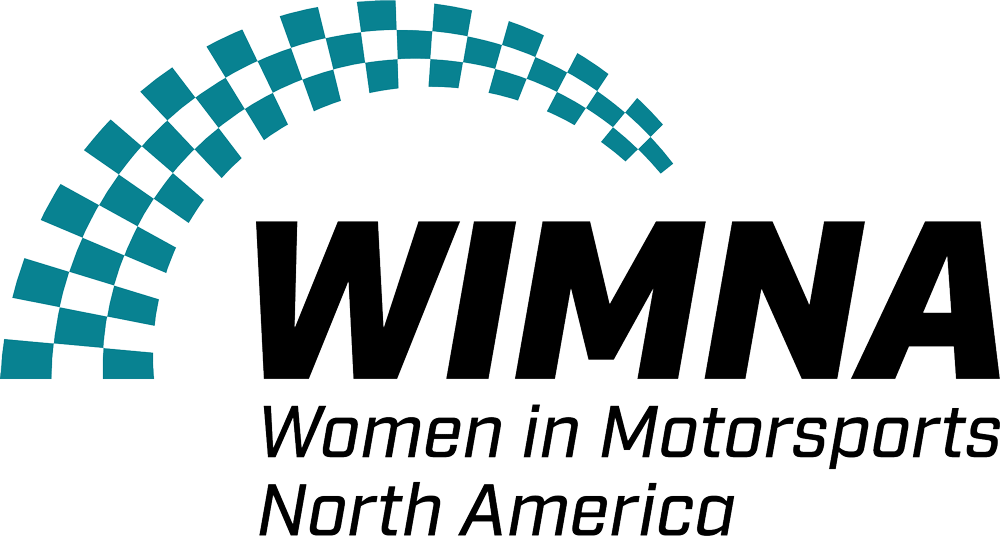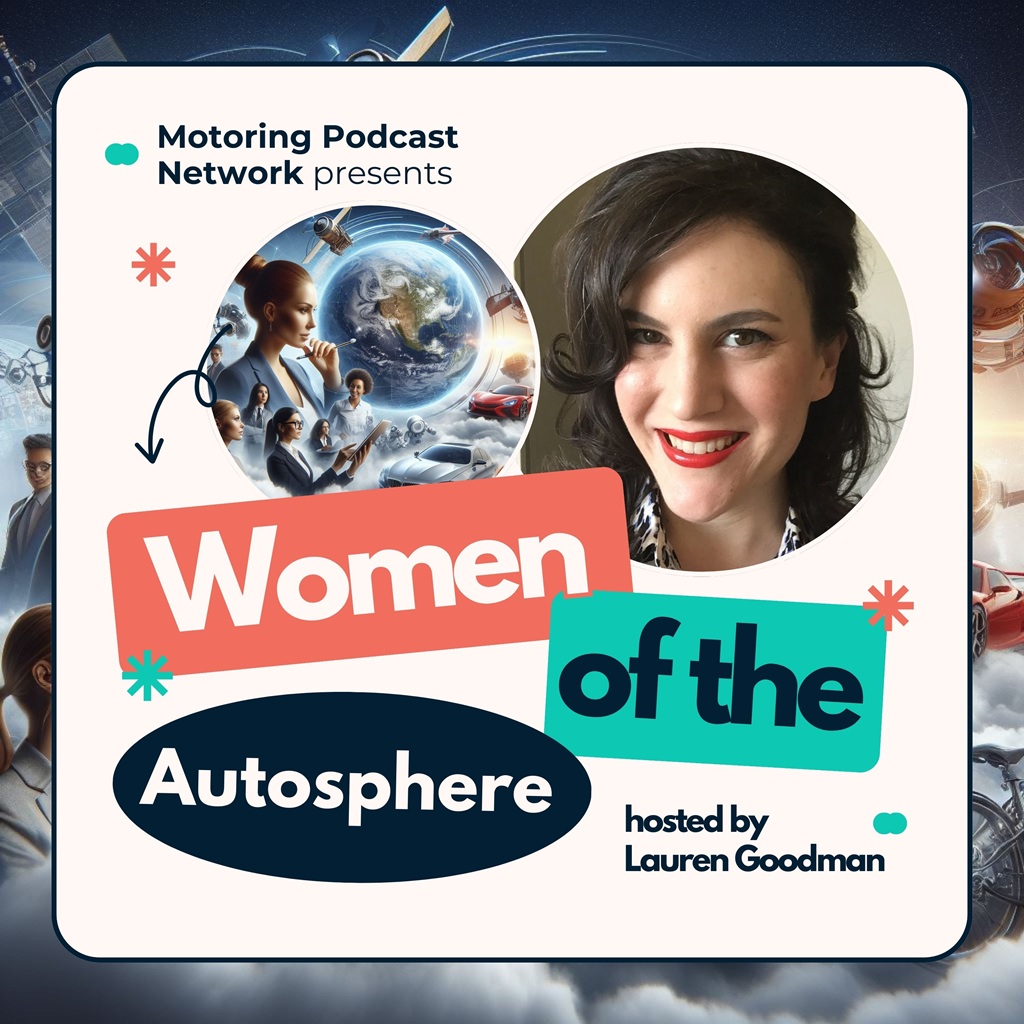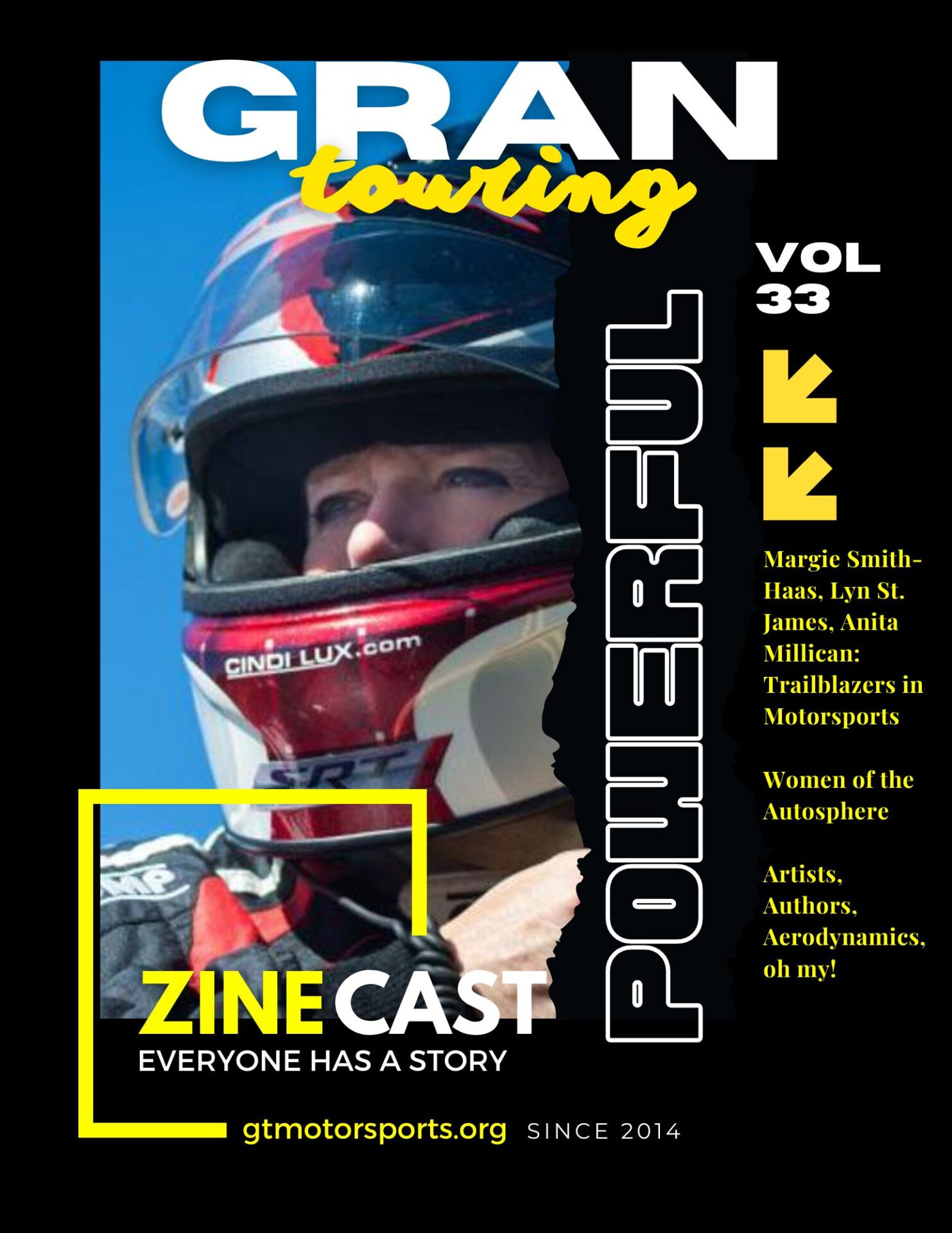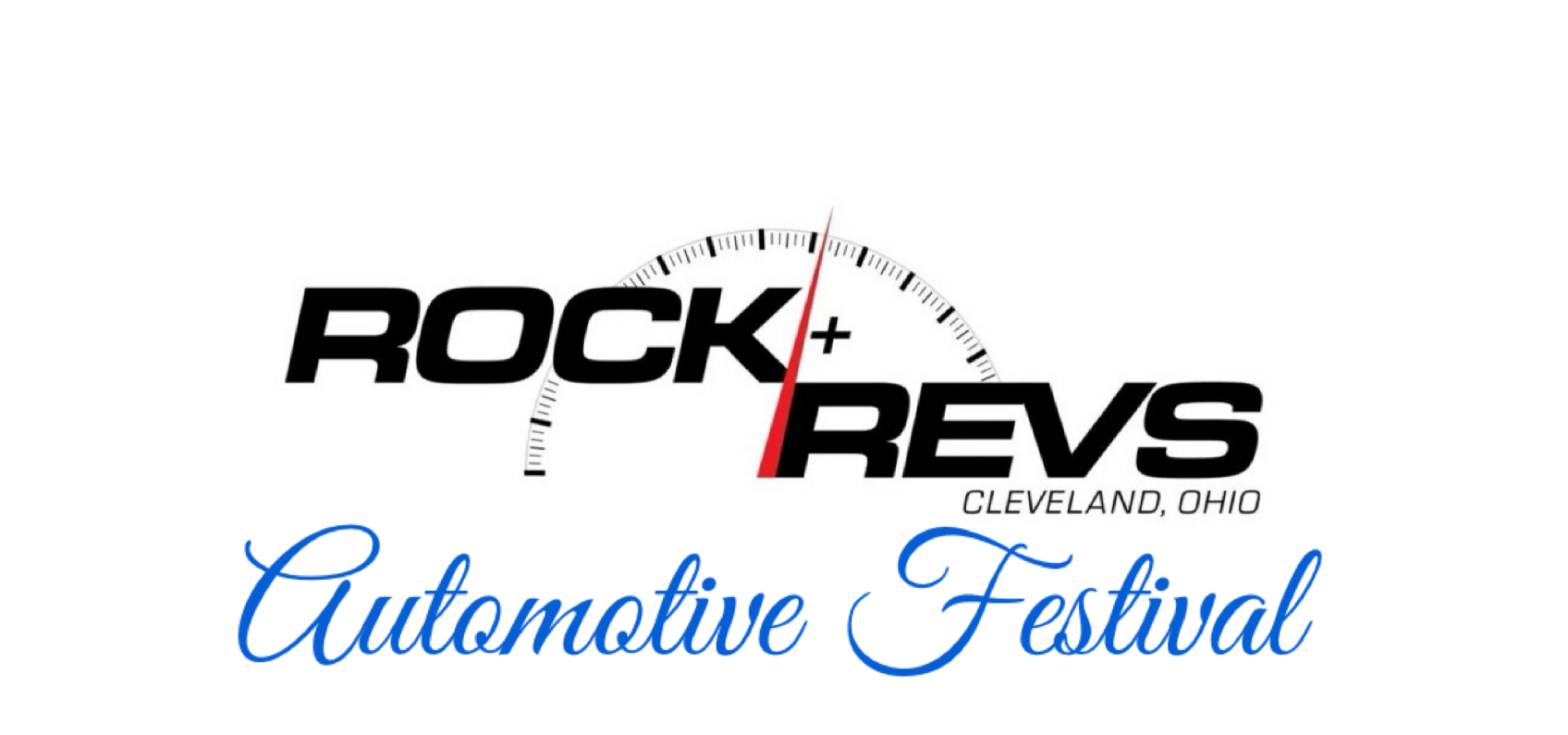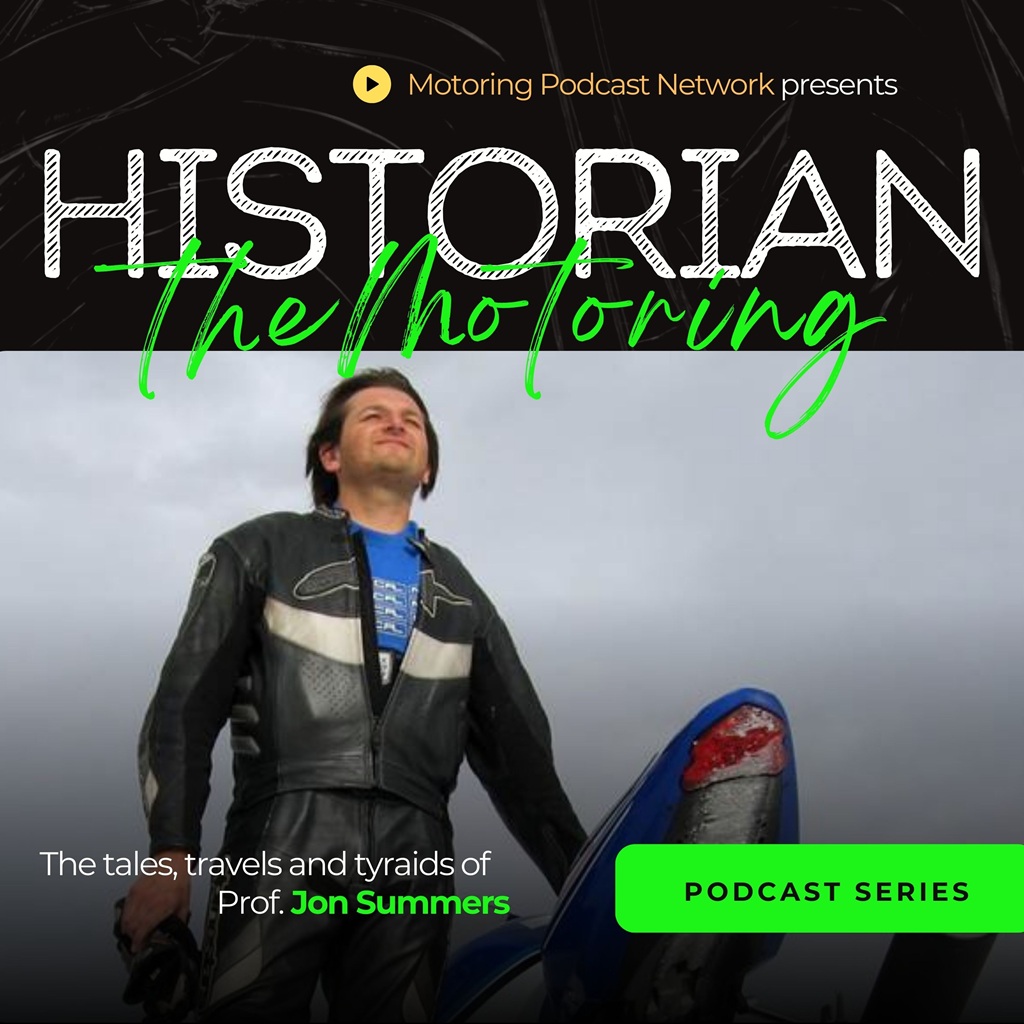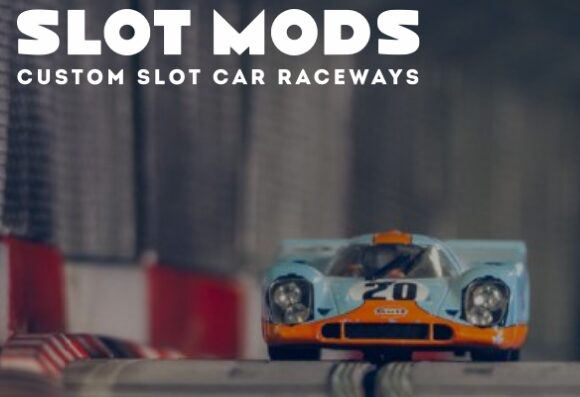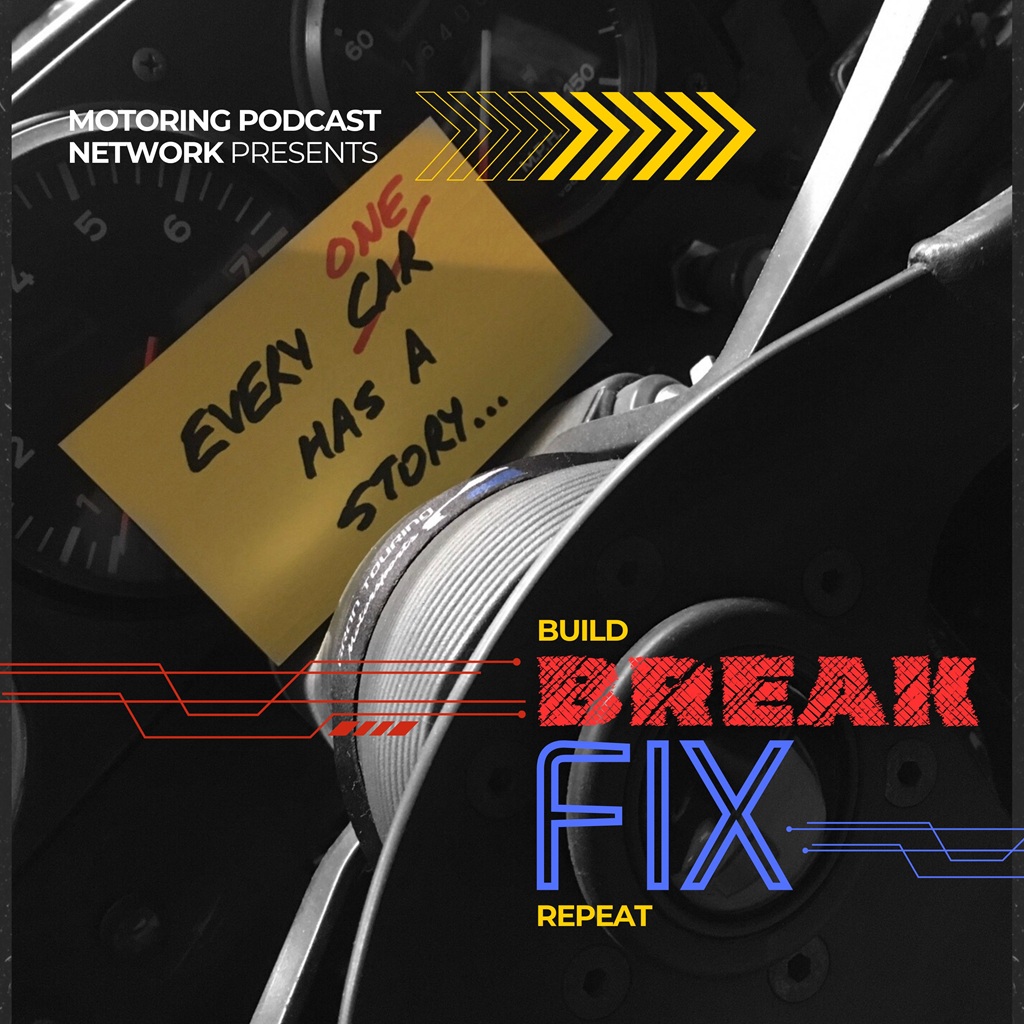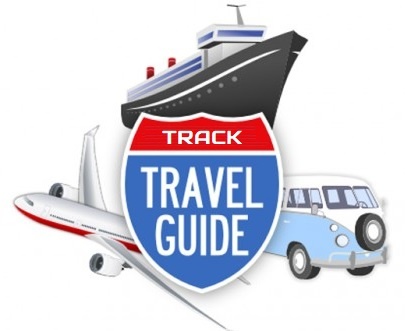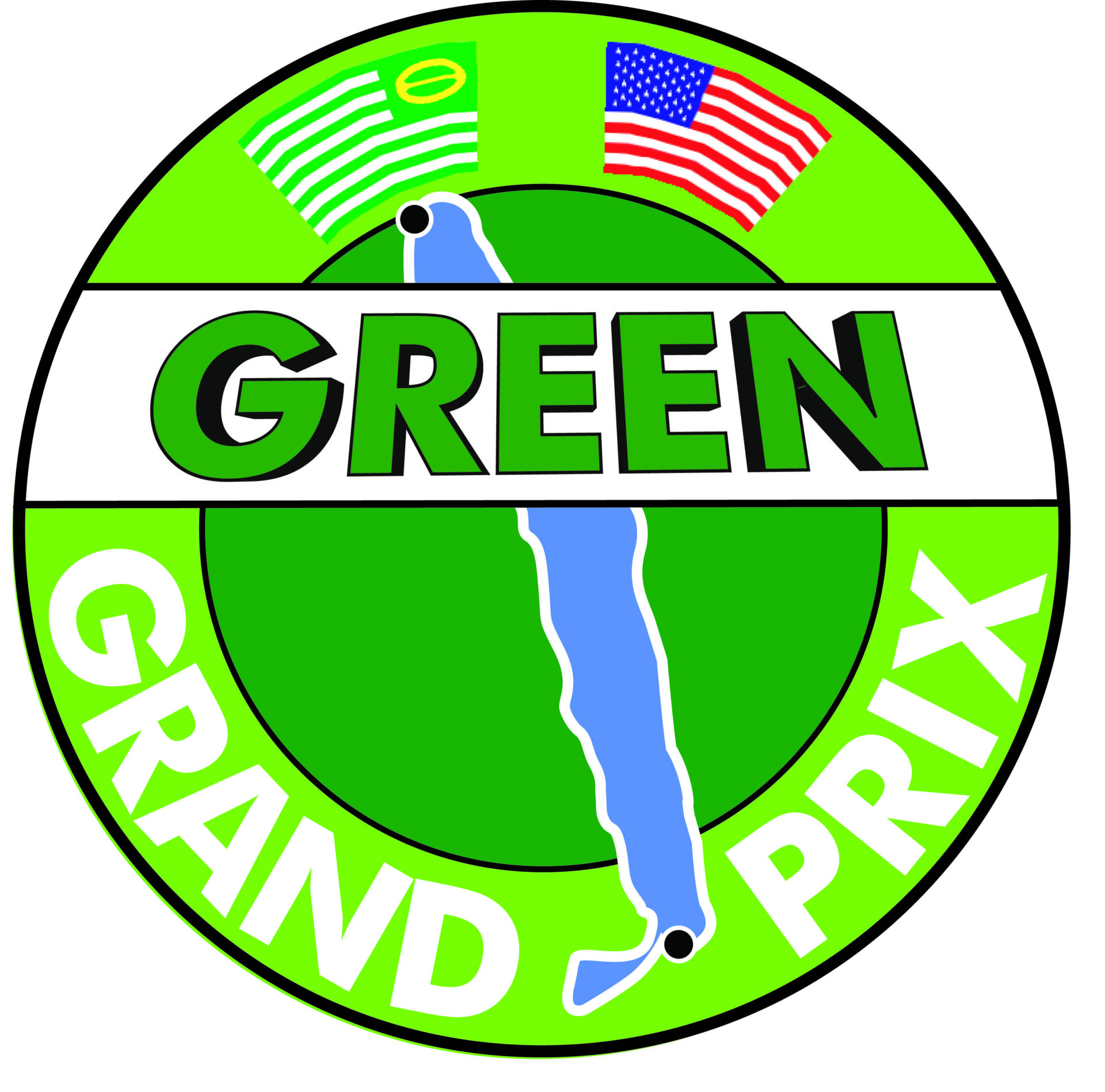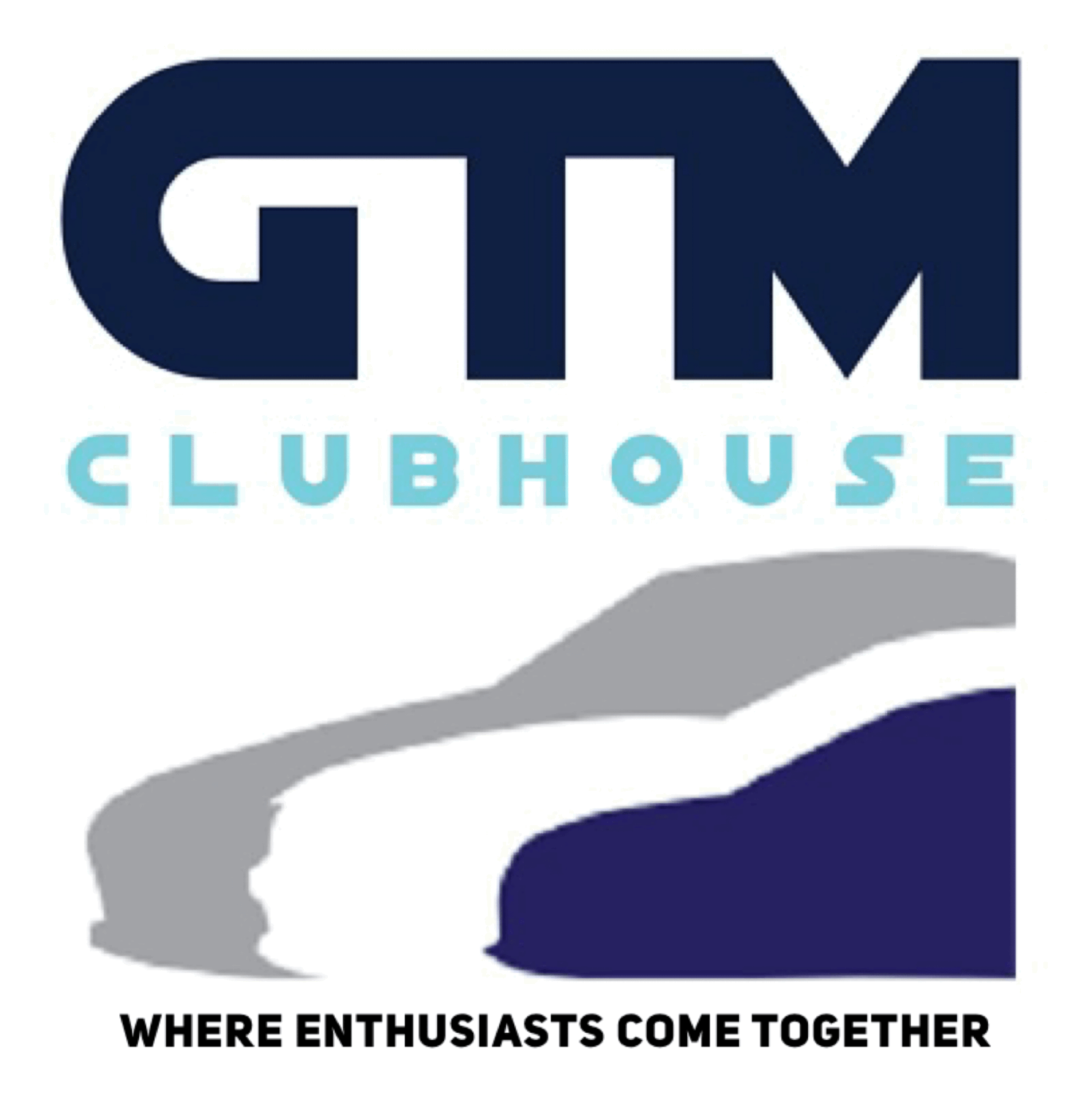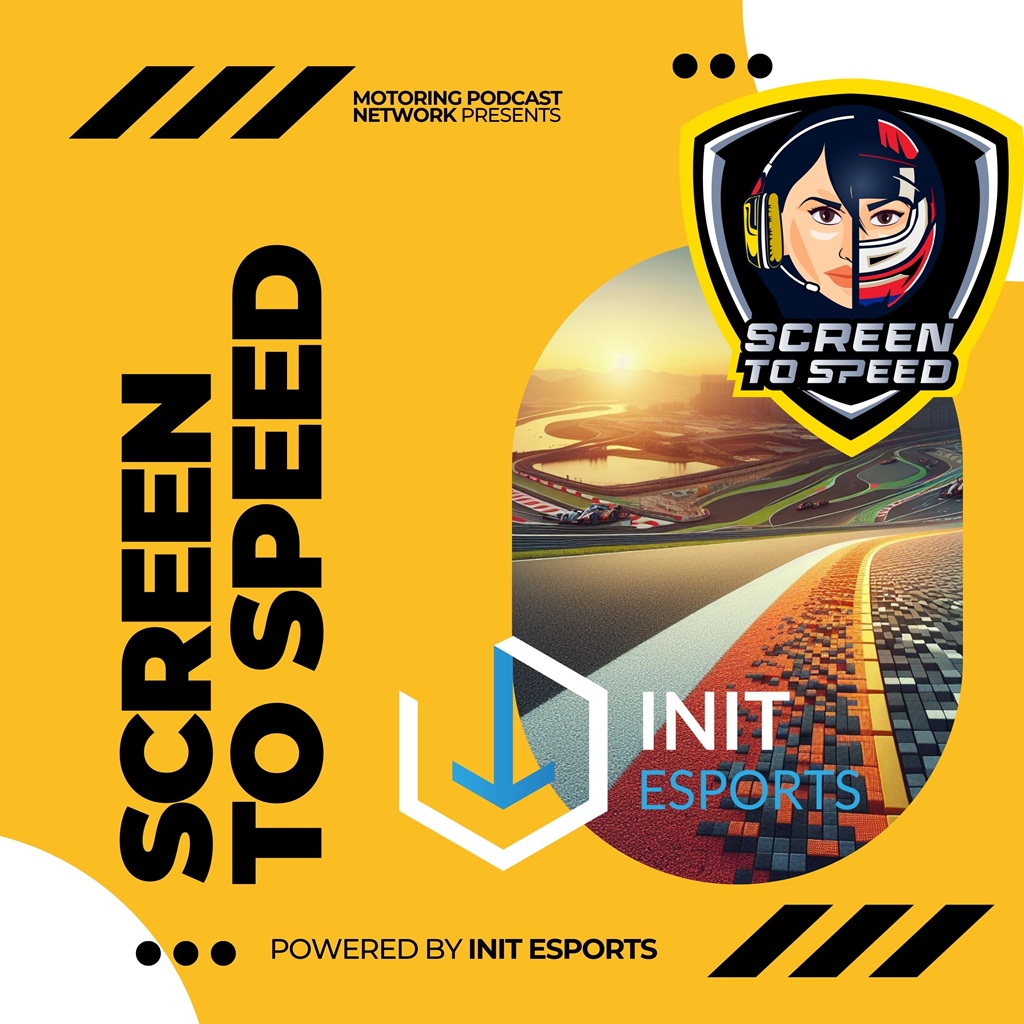Andrea Robertson, a woman who carved her name into Le Mans history. In 2011, Andrea became the last American woman (to date) to race in the 24 Hours of Le Mans—and more impressively, the first to ever stand on the podium in the race’s 100-year history.
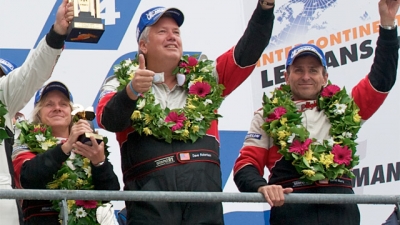
She and her late-husband, David Robertson, along with pro driver David Murry, took on the grueling challenge of Le Mans as privateers, fielding their iconic Ford GT40 against some of the biggest names in endurance racing. With grit, determination, and sheer passion, they defied the odds and made history on one of motorsport’s biggest stages.
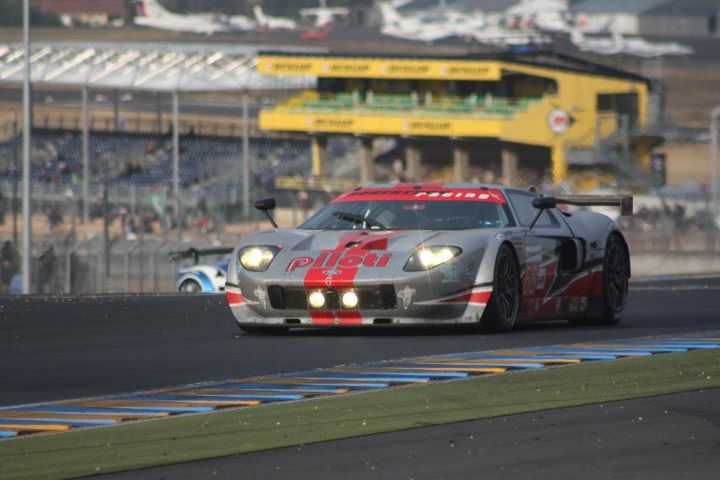
How did they do it? What was it like to go wheel-to-wheel against factory-backed giants? And what does Andrea’s success mean for the future of women in endurance racing? That’s what we’re here to find out!
Tune in everywhere you stream, download or listen!
 |  |  |
- Show Notes
- Transcript
- Highlights
Show Notes
- What initially drew you to endurance racing, and how did your journey lead to competing at the 24 Hours of Le Mans? Why did you choose the GT40?
- Le Mans is one of the toughest endurance races in the world—what were the biggest challenges you faced leading up to and during the race?
- Le Mans is as much a mental challenge as a physical one—how did you prepare yourself for the intensity of the race?
- Racing as a privateer comes with its own unique set of obstacles. How did you, David, and David Murry manage to compete against factory-backed teams?
- What was it like to drive a Ford GT40 on such an iconic track, and how did the car perform throughout the grueling 24 hours?
- What do you feel is the most challenging part of driving at the 24 hours of LeMans?
- Can you walk us through the emotions of standing on the podium as the first American woman to achieve that in Le Mans’ 100-year history?
- Looking back, what does that historic race mean to you personally and professionally, and how has it shaped your life beyond the track?
and much, much more!
Transcript
Crew Chief Brad: [00:00:00] Evening with a Legend is a series of presentations exclusive to Legends of the Famous 24 Hours of Le Mans, giving us an opportunity to bring a piece of Le Mans to you. By sharing stories and highlights of the big event, you get a chance to become part of the legend of Le Mans, with guests from different eras of over 100 years of racing.
Crew Chief Eric: Tonight, we have an opportunity to bring a piece of Le Mans to you, sharing in the legend of Le Mans with guests from different eras of over 100 years of racing. And as your host, I’m delighted to introduce Andrea Robertson, a woman who carved her name into Le Mans history. In 2011, she became the last American woman to date to race in the 24 Hours of Le Mans, and more importantly, the first ever to stand on the podium in the race’s 100 year history.[00:01:00]
She and her late husband, David Robertson, along with pro driver and former Evening with the Legend guest David Murray, took on the grueling challenge of Le Mans as privateers, fielding their iconic Ford GT40 against some of the biggest names in endurance racing. With grit, determination, and sheer passion, they defied the odds and made history on one of motorsports biggest stages.
How’d they do it? What was it like to go wheel to wheel against factory backed giants? And what does Andrea’s success mean for the future of women in endurance racing? That’s what we’re here to find out. And with that, I’m your host, Crew Chief Eric from the Motoring Podcast Network, welcoming everyone to this evening with a legend.
Andrea, welcome to the show.
Andrea Robertson: Thank you so much.
Crew Chief Eric: Every good story has an origin, and this one has to be probably one of the most unique ones. So take us back to the beginning. Did you just get up one morning and say, I want to race at Le Mans. Like, how did you get into endurance racing? Take us on the journey through your beginnings of even high performance driver’s education, meeting up with David Murray.
And what led you to competing in the 24 [00:02:00] hours of Le Mans?
Andrea Robertson: I go back to when I was a teenager back then. We had their classic cars now. But I started drag racing unbeknownst to my parents. I had a niche. I had friends and we had a good time. I was at the drag strip pretty much every weekend. Then of course, work gets in the way, your career, both David and myself, aviation people.
We met in the early nineties and then we always talked about racing. We watched Formula One together. There was an interest in racing. And then he came home one day and he says, Oh, we’re going to get a race car. We’re going to start racing. We’ll start at our home track in Michigan, Waterford Hills. I said, okay.
So we got a Spec Racer Ford. We shared it for the first year or two. It was great. Had a good fun. The next year he decided he wanted to go into Formula Ford, which he was too big for. I thought he was. He squeezed into it. But I stayed with the Spec Racer and we just kind of built ourselves up through the years.
He said, we’re gonna go to different racing schools, which we did throughout the United States. And we just kept building up and we liked it. We were at the track all the time. Then we ended up, we got a couple Painos [00:03:00] GTSs. We ran those for a bit. Just kept working on the skills, working on the skills. And you know, we ran some races here and there, SCCA.
And then one day Dave comes home and he goes, Oh, we’re going to run in the American Le Mans series. And I kind of rolled my eyes. I said, Oh, come on. What are you talking about? You know, craziness. And he was dead serious. So we kept going again through the schools, got our licensing built up. Watched ourselves.
This is what his goal was. So I think it was way back in 2006. We bought a Painos. It was not a real good car. We campaigned it for part of a year and we parked it. The handling was just, it was not a good situation. We kept looking. He said, well, we’re going to do the American Le Mans series. And I was a little apprehensive because I thought, oh boy.
That’s a series. That’s tough competition. We got to really be on top of our game. So we went and looked at a couple different cars and he wanted to try the Ferrari, but he couldn’t fit into it properly. And then we weren’t sure about a Porsche. We were looking all over and then we got a [00:04:00] call out of the blue.
There were some GT40 frames over in Kevin Duran’s shop in Lebanon, Ohio. I think we went out there and we decided, well, let’s build our own car and let’s try it. So we took that task on the team. We had. built the car from scratch. We debuted it in 2007 at the 12 hour Sebring. We were doing pretty darn good considering, you know, brand new going up against so many pro drivers.
And again, I was very, very nervous. But prior to that, we did a whole lot of driver development. We bought another GT40, a street car with a two seat. Terry Borcheller was my coach. And then David Murray was a coach for Dave. So we rented tracks. We were at Carolina Motorsports. We went to VIR. We went to Road Atlanta.
We went to Sebring. We did a lot of driver development and I studied real hard. Dave Murray will probably tell you, I probably worked the hardest out of all of us because I just felt as a female, I had a disadvantage, I guess that’s the word I want to use. I had a disadvantage. I felt it. When we debuted at [00:05:00] Sebring in 2007, I was very self conscious as a female, but then I thought, ah, you know what, when you put your helmet on, nobody’s going to really know if you’re male or female.
You just go out and do your thing. So we ran for seven hours. We were actually holding our own and doing pretty good. And then my David got in the car and the water bottle failed and he dehydrated and he crashed and turned 10. So we were out of the race, but it’s like, well, You know, these things happen.
He was okay. And then we continued on better and better. It was our money all on ourselves. No factory help. No, nobody. Cause Ford was against us. They didn’t think it was right that we were campaigning a Ford GT. They didn’t want nothing to do with us. We didn’t ask him for help. It’s like we had enough other people coming forward, even from some of the other teams that we made friends with.
There were people that came to us, you know, what do you need? You need help? You know, we had wind tunnel. We sometimes shared tracks for tire testing driver development and we kept at it. We just kept at it. And then Dave says to me the one day, Oh, we’re going to do the 24 hour Lamar. And I rolled my eyes.
I said, Oh, come [00:06:00] on, you got me in the American Lamar series. Now you want to do the 24 hours. I just thought, okay, Okay. So you get into it, you just tell yourself, okay, it’s a big undertaking. And it was a big undertaking because it was all on ourselves for shipping the cars and the team, who is going to go.
We kept that even with the American Le Mans series. We had one year, we were pretty much a top 10 finisher all through the year. We had some good finishes here and there. But, you know, you’re going up against factory teams that had all the money, all the backing, every three years they get a new chassis.
They had all kinds of stuff. What we did was all on our own with the very clever people we had and, you know, the determination and the fun. He wanted to do 24 hour Le Mans. Okay. So, April that year, 2011, we were trying to get both cars in. One of the cars was going to be Dave Murray, Colin Braun, and Anthony Lazzaro.
And then Boris said was going to be with me and Dave and the other car. We went over in April. We had to qualify. You had to [00:07:00] qualify. So we did. We did the night session. We qualified. We did good. We held our own. One car was in. The other car was the first on the reserve list. And we were waiting for Aston Martin because they weren’t sure they were having problems with the one car.
Then they decided they were going to take that spot. So the 04 car got bumped out. So we ended up, Dave Murray drove with us. And, you know, we had half of the team instead of the whole team. Big undertaking. But we did it. And then when we were over there in April, Aston Martin invited us over to England.
They had a simulator because we had never been on the track. So they had a racing simulator. So we were over to England with Aston Martin and taking turns on their huge, I’ve never seen a simulator that big, the screen that big. There were some good people there that they talked to us. They guided us, helped us.
I studied, studied, studied, studied. I thought, you know what? If Dave’s going to get me into this, I’m going to be the best I can be. And I wanted to outshine him. That was kind of my goal was to outshine him, smarty pants. So I worked, I did [00:08:00] everything possibly could to become a very, very good driver. So thanks to Anson Martin.
We came back home, got ready, got prepped, flew into France, went to Le Mans. Wow.
Crew Chief Eric: Let’s pause there for a second and get everybody caught up. There’s a couple things that we can unpack from your story. ALMS in the early two thousands, there were other women drivers at that time. Some that had been on other programs that we have on the NPN, people like Cindy Lux, and even there was, you know, Lindsay James, there’s a women’s variant.
Series of ALMS. Did you compete in that as well? What was the paddock like? And how did you feel like being mixed in that environment coming away from SCCA club racing and things like that?
Andrea Robertson: Intimidating because we weren’t a factory team. We were a husband and wife team. I was a female and for years, I believe I was the only female that ran.
I remember one race Cindy Lux was in at mid Ohio, and that was the only one that I remember, but it seemed like I was always. the only female. And so I tried to really be conscious of [00:09:00] the fact of going against pro drivers and minding myself out there and watch. I listened very, very intently to Dave Murray, Terry Borcheller at the time, and even the other drivers that we got to know, like got to be good friends with Seth Nyman from the Porsche team, Flying Lizards.
And there were some other good people that we got to know. And, you know, we listened. I listened very intently what to do out there, what not to do, how to be, how not to be. And I didn’t want to cause any trouble. I wanted to keep my car safe, keep myself safe. And then we finally, we made friends. I mean, people would stop by from the other teams and they’d come by and chat with us.
How’s the car? You need any help? How’s it going? And we got to be friends with some of them and I didn’t feel so intimidated. Maybe after about a year and a half, I started to feel more comfortable with the environment that I was put into by my husband.
Crew Chief Eric: Let’s unpack that for a moment to Dave kept coming with these new challenges.
We’re going to do this. You know, we’re going to go spec racer Ford. Oh, we’re going to go formula [00:10:00] Ford. We’re going to go SCCA. We’re going to go IMSA. We’re going to go, you know, and kept stacking, stacking, stacking. When was the point where you suddenly shifted from, all right, Dave, we’ll do this too, I really want to do this too.
Was there a moment at which you said, this is suddenly real. We are going to Lamar. It manifested itself in you that you really wanted to do this.
Andrea Robertson: We’ve always competed with each other. We were type A personalities. Both of us worked for aviation backgrounds and Dave, he was borderline genius and he held many positions in aviation besides a pilot and flew just about every airplane out here.
I was in aviation too and I’m a private pilot. I have a dispatch license so I worked just as hard even though I wasn’t a commercial pilot like he was. But it got to be the point where that’s all we talked about was racing and friends and family, it was racing. So I just told myself, you know what, I’m going to show you that I’m the better driver.
And I worked real hard at that. Cause we would get asked that a lot of times, you know, Dave would always want to be the first [00:11:00] one to say, well, you know, sometimes she’s faster. Sometime I’m faster. And then it got to be a certain point where we’d be asked and I would stand there quietly and he’d kind of acknowledge grudgingly goes.
Andrea’s the better driver. She’s always faster than me. So I thought, finally, he realizes. He put me into this, but I worked hard. I was always on our home simulator. I was reading track notes. I listened, I talked, and then it got to the point where, oh, you know what, I just want to be in the car, because I felt that was the best learning tool.
Be in the car, feel it, do it, become one with the car and the tracks. And then Dave would start asking me, well, what are you doing different out there? Because we each had a different driving style, which you know, every driver does. You can coach and you can take the feedback, but ultimately when you’re in the car, you follow the rules, but you become your own driver.
Crew Chief Eric: The road to Lamar, you mentioned 2010, 2011 timeframe. You mentioned Aston Martin and we recently had Adrian Fernandez on it and he was on the Aston Martin team and [00:12:00] they had some complications. And so, you know, it’s. It’s funny how small the world is, especially when it’s in the same timeline. Do you just call up the ACO and say, Hi, I’m Andrea and I want to compete with my GT 40.
Like I understand when Aston Martin goes to Lamar and then they call up somebody like Adrian and they say, we need you to drive for us. And the, you know, there’s all these contracts and all this stuff. It’s very different for the pro drivers. How did you broker this deal as a privateer to go campaign your car?
Andrea Robertson: Well, it’s been quite interesting to say the least. In 2009, we had a personal invitation to bring our team and race in the Asian Le Mans Series over in Okayama. I remember Dave got off the phone, I think Scott Atherton might have called him, he was in charge of ALMS at the time and said, Personal invitation, you’re invited to go to the Asian Le Mans Series.
It’s like, really? So we did that in 2009. We got some help transporting the car over all the way to Tokyo. That’s a long, I think it was a 14 hour flight for us. But we did that. I think we got a sixth place and an eighth place finish [00:13:00] over there. So we didn’t do too bad. And the people just welcomed us. We don’t know the language.
We had an interpreter we hired because of the language barrier. But the fans that came to the track were so gracious. They showered us with gifts. Here were this little mom and pop team. Our interpreter would come. You have some guests. I have never bowed so much in my life because they would come over and they’d bow to you.
And we would bow back and they would present us with baskets and boxes of beautiful things. Asia was good. Japan was good to us. And then when Dave started, well, we’re going to work up to the 24 hour Le Mans. That’s my goal. My goal. It’s like, okay, okay, okay. So when we got to that point, I kept, I’m going to work hard.
I’m going to work hard because if he wants to do this. I want to be on top of my ballgame with this endeavor. What it was is, in 2010, there was talk, I believe, with Scott Atherton from ALMS, because that year, I believe, Jaguar went over to the 24 Hour Le Mans. Their campaign didn’t do very well. So then it was the next year [00:14:00] between Dave broaching the subject with Scott Atherton of what about us going to Le Mans?
So I think there was phone calls had been made. Maybe Scott campaigned on our behalf. And the next thing I know, I think it was in January of 2011, Dave came home all excited. He goes, we’ve been accepted. We have an invite to go to the 24 hour to participate. And I just looked at him. I said, really? So he goes, here’s the plan.
We have to go over in April and qualify ourselves and the car. Cause that’s their rule. Okay. So we started right away getting everything ready. Passports for everybody. Who’s going to go shipping the cars over. But we did get an invitation. And we took it. We went over and we took it again, April of that year.
And both cars were left with Aston Martin after we were done with qualifying and the night qualifying. So Aston Martin said, yeah, we left the cars in England with them. And then everything would be transported over in June for the 24 hour
Crew Chief Eric: previous guests of the show. You know, we’ve asked them questions about what were your first impressions of Lamar?
How were you receiving? by the [00:15:00] French by the other teams and things like that. There’s a whole other layer of complexity here. Was it different being a privateer and not being one of the big name teams where you looked at differently and gender aside, what was it like stepping foot at hallowed ground, like Lamar for the first time as a privateer?
Andrea Robertson: We were welcomed. The French were so kind to us. All the ACL officials were so kind to us. And even like other teams, it’s so funny how, I think because Dave was 6’4 and I’m shorter, that’s how we stood out to a lot of people. Oh, there’s the husband wife team. And it would be hilarious that people would call our names.
Oh, Dave and Andrea, Dave and Andrea, can I have an autograph? How do they know we’re Dave and Andrea? But the other team’s friendliness, most of the other teams were very friendly to us, very gracious. We got very high compliments from the French officials at ACO. This was from Scott Atherton. He said, after the fact, he said that they complimented us on the little American team that came over and didn’t cause any problems.
The team was gracious. We [00:16:00] respected the country. We respected the people. We respected the race itself, the whole venue, and we didn’t do anything to get ourselves in trouble on the track. We were one of the only teams that didn’t have speeding in or out of the pit lane. I was specifically told no burnouts, which is kind of disappointing.
But I was told by my engineer, no, no burnouts and ALMS. We could do nice big fat burnouts going out of the pit lane, not in France. But yeah, we stressed to the team, you know, we’re guests in another country. Represent the United States and us as a team. Just represent us the highest standards that you can.
And we did it.
Crew Chief Eric: And in a weird way, it sort of parallels the Garage 56 experience from a couple years ago, right? It’s like, who are these guys? Where’d they come from? But again, super well received, well respected, everybody minded their P’s and Q’s. Yeah. LeMans, as we know, Is one of the crown jewels of racing.
It is one of the toughest endurance races in the world, and it’s highly regarded. It’s over a hundred years old now. So [00:17:00] for you, and I’ve heard part of this story from David Murray about how hard you train or one of the hardest working drivers out there, but what was some of the biggest challenges you faced leading up to race day and on race day itself?
Andrea Robertson: I wanted to make sure I was mentally and physically fit. One of the things I’ve always strived for, and I used to get made fun of by my Dave, he goes, you’re always working out with the weights or in the exercise room. I said, well, I have to be on top of my game. And one of the things, when we first started in ALMS, the GT cars did not have air conditioning in them.
And we saw drivers that would literally come out of their stint and almost collapse on pit lane. It’s hot in those cars. And the next year, of course, the rules change and air conditioning was allowed in the GT cars. Good for Dave, my husband. But what I told myself, that’s a mechanical part. If that fails What do I do?
I don’t want to rely on the air conditioning. So I conditioned myself. I worked, worked, worked. When I drove in the car, I didn’t turn the air conditioning on because I always told myself if that fails, [00:18:00] I don’t want to be the driver that fails because the air conditioning failed. So I made sure I was always as fit as I could be physically as well as mentally and emotionally.
When you’re in the car, you kind of put the blinders on. You’re focusing on what you’re doing. You’re driving that machine and what you’re doing out there on the track. Like I said, I didn’t use the air conditioning. It’d be sparingly. If it was real hot, I’d click it on. Cause you know, a cool suit only works for a couple laps anyway.
So this is the difference between me and Dave. I said, if the air conditioning fails, you don’t want to fail as a driver. So I stressed that even today, you know, I just got back from Sebring two weeks ago and I don’t use the air conditioner. If I don’t need it, I don’t use it, but I wanted to make sure that as a driver.
I wasn’t going to cause a failure for the team. I wanted to be the best I could be because I’m also representing my team because we worked so hard together to come to this big endeavor. I always felt that after reading and researching the biggest race in the world, the 24 hours of Lamar,
Crew Chief Eric: David Murray also mentioned that during the race.
You had a hard time [00:19:00] keeping up with the caloric intake, forgetting to eat or not wanting to eat. Did that weigh on you? There is a special moment in there because I believe the race occurred on your anniversary as well.
Andrea Robertson: I’m still about that weight. Again, we were at Sebring and we have a cook and he’d come around with the food and when it’s right before I’m getting, no, no, no, I don’t like food.
I will eat breakfast and I will eat a little bit for lunch, but I don’t feel myself. But at Lamar, I did a three hour stint overnight. And I would go out, come in for tires and fuel and go back out, go back out. And then my engineer radioed, he goes, okay, I need to get you out of the car. And it was so funny because at that point in time, I thought, man, I’m hungry.
I just got ravenous. So I radioed, I said, this is what I want to eat. Tell my little gal, we had helpers, you call it. I said, I want salmon. I want green beans. I want potatoes, salad, a roll, get me something to drink. No pop, but she was made sure we had these bottles of electrolyte. I still have my bottle with my straw in it.
I still have it, but [00:20:00] my drink. And I said, maybe a cookie. I said, have that. That’s what I want to eat. So Lee gave that to the little gal that was taking care of me. So I come into pit lane and I’m thinking, yeah, I just, all of a sudden it was like, I want to eat. I want to eat. I wanted to drive more, but I was hungry.
So I get out of pit lane and then Lee, my engineer, he goes, Oh yeah, Dave’s here. He’s got something special for you. I’m like Dave Robertson. Yeah, it was our anniversary. So he’s standing on pit lane waiting for me. He had a bouquet of flowers. He told one of the boys to go to Vanessa’s. She was our hospitality gal and he goes, go get some flowers from one of our tables.
So he’s, he was standing there and it was hilarious. I didn’t know this. So I get out of the car and I get my baby seat out. I drive with the baby seat because we had such a height differential between me and Dave. The seat was made for him and I had to ride with an insert. So I’m getting my insert out.
Dave Murray gets in the car and Dave goes, Oh, happy anniversary. So he’s giving me a kiss on my helmet. I will thank you. And it was hilarious because Speed Channel was there filming me. It was just comical in a way. But I said Well, [00:21:00] thank you. I love bouquet. And now I’m going to go and strip out of my uniform and wash up and wait for my meal to come
Crew Chief Eric: the anniversary scene around the world.
I think we all saw that moment on television. You were always trying to best your husband, even on the day of the race. And you talked about driving overnight. We’ll get into that a little bit more. But one of the things That David Murray had mentioned when he was here. He talked about the fact that Dave, your husband sort of did the shortest amount of driving and you split the load between yourself and David Murray.
So when you took on the extra stints and the extra time, did that play a toll on you physically, mentally? How did you stay focused for all those hours of driving?
Andrea Robertson: Not at all. I was on a mission. So yeah, we kind of not let Dave be in the car. Sometime he would lose his focus or something. And me, um, you know, I’d do two hour stints, and then I did three hour stints.
I could do more, but Lee was trying to make sure I didn’t burn myself out. But I loved driving. The car was so good. Once you got comfortable with everything at Le Mans. It was no [00:22:00] issue at all. And I drove a lot through the night, which was fine. My Dave, he was not big on the night driving. So, you know, okay.
So I took a lot of driving. I think we let him in maybe one more time and then me and Dave Murray finished off the rest and then I took the checker, but the car was so good. It was so smooth. It breaks so straight. And it responded so well. We had two hiccups that I can remember. One of my earlier stints, the paddle shift fail.
So I had to bring it back in, but I tell you, the team was smart. They left the sequential shift in. It was just bolted down. When I radioed, I said, paddle shift fail, paddle shift, we’ll limp it in, limp it in, limp it in. So when I got to pit lane, I was rolled into the garage. They took the hood or the lid off the back of the, by the engine.
They put the sequential shifter back up. The paddle shift was done. And then inside the cockpit, we, I did the zip tie, brought the sequential shifter up. I thought, Oh boy, I’m going to be rusty. But you know, after one lap, you’re back into the groove. Yeah. The paddle shift was brand [00:23:00] new that year. And you know what?
It failed. So what, but guess what? Because. The crew was smart enough to keep the sequential in that saved us because I think there were two other teams, their paddle shift failed. They were out, so it kept us going. So after one lap, I got the rest out. I can do this. I had been used to the sequential, but yeah, I did love the driving.
So for me, it didn’t drain me physically, mentally, or emotionally. I took it methodically. Even when it was my rest period, I really don’t think I rested. I’d come in and strip because you’re all wet because you got your long racing underwear on under your driving suit. So I’d come in, we had little cubbies, little trailers or whatnot.
Ours just happened to be right under a speaker and it was so loud. All you heard was whatever was on the speaker, but I tried to rest as best I could, and then there’d be a knock on my door. Andrea, you’re up. Get dressed and get dressed and go out to our garage and I’d be ready to rock and roll. But I wasn’t tired.
I wasn’t worn out. My mind was still sharp. I [00:24:00] tried to stay as focused as I could and I kept myself hydrated. And again, my little gal kept giving me these electrolyte drinks to make sure I had that at least in my body.
Crew Chief Eric: So you mentioned one issue with the car was the shifter. What was the second one?
Andrea Robertson: Oh, The second one, Dave Murray got a flat tire way on the other side of the track.
You know, Lamar’s about what, 8. 46 miles carbon fiber from a previous crash. You know, it’s cleaned up as best as can be. We feel he must’ve ran over some carbon fiber, got a flat tire. So he brought that in change and out he went. Those were pretty much the only two hiccups that I can remember we had. And we just kept going.
Hold your line, get out there, and just keep at it. So, we kept at it.
Crew Chief Eric: Racing as a privateer comes with its own unique set of obstacles, because you don’t have as many resources and spare parts, and you’re trying to maintain the car for 24 hours. Talking a little bit more about the car and the driving, you know, David Murray mentioned how he spent a lot of time, he was very conservative, did a lot of drafting.
He felt that maybe you guys had a slight performance differential between some of the factory teams and things [00:25:00] like that. Did you have the same impression of the GT or did you feel like you were in the mix with everybody else?
Andrea Robertson: We had a slight disadvantage as a privateer team. Yeah. We didn’t have the resources like Ferrari Corvette had.
And yeah, some of those cars were blindingly fast, but I will tell you. What I noticed, sometimes the drivers got a little bit too aggressive and they crashed themselves out right away. I saw that with the Audi with Alan McNish coming out of Dunlop turn. He collided with a Ferrari and knocked out that Audi R18.
One of my early mornings, since it was Corvette was battling with someone else. They passed me on the Porsche curves, which is fine. I’m holding my line. I’m keeping my business, doing my business. I come up to the Corvette corners and here’s a Corvette smashed out pretty bad, and it’s over aggressive driving, but you know what, we did have some rain in the morning too, but I was trying to be, and like Dave says, you be conservative, go out there and be fast when you can, but be conscious of the fact of what you’re doing out there.
We’ve always felt that, yeah, we were [00:26:00] always a little bit behind because we didn’t have the same thing that the factory drivers had. And then there’d always be like, Oh, you, you’re restrictor. You got to have this. We didn’t always feel that everybody was on the same playing field, so to speak. With restrictors or weights, but that’s just, you know, paddock talk.
Crew Chief Eric: And at this point racing at the 24, based on all your ALMS experience, you were used to running in mixed class racing. And obviously the ALMS schedule doesn’t always include what would have been considered at the time LMP one cars, P1 cars, which are now GDP cars. Again, the speed differential, the United.
States. Even though the cars are the same is different because the tracks are a lot smaller. You don’t have cars doing necessarily over 200 miles an hour at every track in the United States. So what was it like being at Lamar with LMP one cars bearing down on you at over 200 miles an hour? Did you spend a lot of time in your mirrors?
Andrea Robertson: No, I don’t want to drive that way. I glance, but I don’t drive in my mirrors. I always ask my team, especially on the front when they’re in the engineer stand, I’d always say, give me a [00:27:00] heads up. Give me a shout out that Audi or Peugeot five, six seconds behind. That helps me. And then you watch for the corner workers.
You see a flag. Nighttime, it was easier because the GT cars, we had gold headlights and the prototypes had a whiter headlight. So, you know, when you glanced, so we had a rear in car camera rear view. So I would glance at that and I could tell immediately prototype coming, or there was a GT car coming at me.
So at nighttime, it’s easier to see just glancing, but I refuse to drive in my mirrors because I figure if I’m holding my line, I’ll glance to see a radio call from the engineer stands goes a long way. And once I would get that, you know, five or six seconds or whatever it may be Audi Peugeot or whoever it may be.
Has that in my mind. And I, you know, I would just kind of do a quick glance and I’d calculate. It’s like, I’m holding my line. I don’t have to do anything silly. So it worked out very, very well, but yeah, those cars are fast, especially on the most on straight and coming out to Indianapolis, it’s like, Holy moly.[00:28:00]
Crew Chief Eric: So when you compared it to other tracks you drove on, what did you think of Lamont? Did you enjoy turning laps there?
Andrea Robertson: Oh, heck yeah. Yeah, very much. It was an honor to be there.
Crew Chief Eric: Would you consider it a favorite or do you have something that you keep above it?
Andrea Robertson: That’s one of my favorites just because of what we did and we weren’t expecting it.
What we told ourselves going over, our goal was let’s do Lamar. That’s Dave’s Dave wanted to do Lamar. And we said, if we can finish the race, that would be great, man and machine. That means that we have a good car and we did it. And that was kind of our goal was to be able to finish the race without crashing out or mechanically being thrown out.
The podium was just an added, what a bonus.
Crew Chief Eric: What was it like crossing the checker, realizing you were in third place on the podium for the first woman to ever podium at Le Mans?
Andrea Robertson: Well, it was kind of surreal because when I got my call, the knock on my little cubby door, you’re up, get dressed. And I went into our [00:29:00] garage and I’m looking at the monitors and I’m like, okay, we’re in fourth place.
You know, some of the team, Andrew, we’re in fourth place. Okay. I played it cool because you don’t ever count anything ahead of time because you don’t know what could happen. I thought, okay, well that’s pretty good. You know, cause Dave Murray was in the car, he was coming in. I thought, okay, fourth place, this is good.
So I got on, just kept doing my own thing, and then toward the end, as we started getting to the end of Le Mans, Lee came on the radio and he says, Andrea, P3. I said, What? Excuse me? He goes, P3. Just keep doing what you’re doing. Okay. So I thought P3. I didn’t allow myself to get excited. I didn’t allow myself any type of emotion.
The only thing was focus and drive the car till the end. There’s no way I was going to celebrate something that I didn’t know if it was really going to happen. You can’t because I’ve seen too many drivers disappoint themselves. And then Lee gets on, he goes, you got one more lap, he goes, bring it home, he goes, we’re still in P3.
Okay, Lee, thank you. Come around, you know, off of the Porsche curves, Corvette corner, I [00:30:00] see the checker up there. So as soon as I got the checker, Lee comes on, he goes, congratulations, we are P3. And it’s like, then, I don’t know, I just had this big, like, grin came on me. I said, oh my god, P3 after 24 hours, I could go for another 24 hours.
I was pretty psyched up about it. And then it was the most hilarious. thing because after the checker flag went out and we were, you know, all out there on the track, you couldn’t move. The track was inundated with corner workers and the flags and people were beating on your car and they were yelling your name and Lee would come on.
He goes, Andrew, where are you at? And I said, well, I’m at, and I tell him where I was on the track. Well, what’s taking so long? I said, I can’t move. The track has people all in it with corner workers and flags. And I said, they’re yelling our name and beating on the cars, like pounding the fenders. It was hilarious.
So I finally get in, you know, I’m directed to park for me. I thought, okay, so I’m going over to park for me. I get out and I’m kind of standing there and I thought, I have no [00:31:00] idea where to go from here because I’m hearing all these different languages. I’m seeing all kinds of different drivers. I didn’t know where I was supposed to go.
And it’s so funny. There was a driver, like I was saying earlier, people knew who we were. One of the European drivers and he called me, goes, Andrea, come with me. He goes, I take you. He goes, I know where your team is. Okay, thanks. I don’t know who he was, but he knew me. So he took me, there was a car there. He goes, you get in here.
They’re going to take you up to the podium. And then Joey Hand got in. I knew Joey. He was a BMW driver. They got a third place in their class. So then we went up to the car and we couldn’t even move. There was just So many people when we got up to the podium, and then I’m walking up and there were people again that I’m standing there.
I didn’t see anybody. I know, but people knew with Andrea over here over here and they would yell for me or somebody would come and get me. Finally, I caught up to the crew. Then we were like, kind of being organized your team and when you’re going to go out for what not onto the podium. And it was really surreal.
There were [00:32:00] 249, 500 people at Lamar. And when you went up and walked on that podium, it was stunning. There were people yelling our names or American flags flying. So we were waving to people and then, you know, people were calling our names, screaming, and I’m looking and I thought. This can’t be happening.
And everybody was just a joy for all the teams, for all the drivers that we did this. We ran for 24 hours. Our car lasted, our car was a good little car and we did it.
Crew Chief Eric: You mentioned before that Ford wanted nothing to do with it. Can’t believe campaigning our car, privateer, all this kind of thing. And obviously you chose the car because it was what Dave could fit in.
When you think back, Ford hadn’t won at Le Mans in a very long time, especially in the GT40. We’re going to put air quotes around that. You’re up there on the podium, privateer to GT40. A GT40 hasn’t won at Le Mans since the late sixties. Did it suddenly give you the feels? That had to have been a heck of an experience.
Andrea Robertson: Again, I can still see walking up on that platform, all the people that are looking at you and they’re [00:33:00] calling your name. It was a moment to be proud. And I remember me and Dave and Dave, we hugged and we were like, you know, we can’t believe we did this. A little guy like us. And you know, some of these other teams, these factory teams had, you know, maybe campaigned in two or three cars and maybe one or two crashed out.
It’s like, we did it. And mine and Dave’s phone was going nuts. There were friends from the States that watched and the messages was, we watched you and we’re crying. Because we’ve known you guys, you raced with us at Waterford or wherever. And this is the response is what we were getting messages from people.
We were crying, watching you on the podium, but we’re so proud of you. And it’s like, wow. Okay.
Crew Chief Eric: So did Ford ever come back and say anything after it was all done?
Andrea Robertson: You know, there were some of the Ford people did, they invited us to dinner. And I don’t remember the one he was from Ford. He was one of the grandsons and he kind of apologized, said some real kind things, talked to us, you know, like last year I was at road America and Edsel [00:34:00] Ford came up to me.
I went to the bathroom and then my team said, Hey, somebody here to see you. Brian Redmond was there, which I know Brian and then Edsel Ford. And he wanted to shake my hand. He goes, this is a beautiful car and thank you for bringing it and driving it. And I said, it is a beautiful car. I said, I think it was one of the best.
years and one of the most beautiful, iconic Ford GTs there are. This was last year. And then again, after Le Mans, there was some outreach from Ford. We were invited to events, car shows and come to speak and whatnot. And then in 2016, we got an invitation from Ford because they debuted. Remember Chip Ganassi, they brought the new Ford GT to debut at Le Mans.
And we got an invitation to bring our winning Le Mans car over. So I could drive in the parade lap before the start of the race. And there was some other GT winners of 66, 67. So we were all there with these cars. So that was a personal invitation from Ford in 2016.
Crew Chief Eric: One and done.
Andrea Robertson: Right.
Crew Chief Eric: So Dave said, we did it all.
We even podium. We did better than we expected. There was [00:35:00] no bucket list after that. There was no more reach. Why not a second attempt?
Andrea Robertson: Because. We didn’t have a new chassis. Basically, it was like after about three years, you retire a chassis and Ford didn’t make anything after that year. And then, you know, we kind of thought the technology was advancing so well with like the other manufacturers.
We would always be down here without anything new for us going forward. Yeah, we talked about it. It would have been nice. But again, that was kind of like the norm of every so many years, everything changes with the technology. And that wasn’t us. We were the mom and pop team. What we decided or when Dave was still alive, he said, what we’d like to do is go back and if we could get the invitation to go back and do the vintage Le Bon.
We said, Oh yeah, that’d be great. If we ever come to that point. And if that point ever comes, I’ll go back and have Dave Murray go, we’ll do it to honor Dave, if that ever comes.
Crew Chief Eric: Well, the classic is coming back this year for the first time in a very long time. So maybe that will become a reality [00:36:00] here soon.
So I hope so. So switching gears a little bit, as we sort of wrap out here, one of the things that is a common thread when you talk about Le Mans, what did Le Mans teach you? How did it change you as a driver? What did you take away from the experience and does it still affect your racing today?
Andrea Robertson: Yes, it does.
It truly was an honor that we got to go. I felt we represented ourselves very well for who and what we were as the little guys. Kept ourselves out of trouble and I learned a lot by listening to the other drivers, you know, who we got to be friends with, who we got to know. And you take some of their skill sets or their thought processes.
Today even, girls might come up and talk to me. I was just approached a couple weeks ago about, actually I got two speaking engagements I’m supposed to do for females. And I said, yeah, I’ll be happy to do that. What I want to do, especially when we went over to La Mom, and I told this to my day because I said, don’t get cocky.
Do not ever, ever get cocky because that can knock you out of a race right away. When you have that [00:37:00] type of attitude, I always felt even keeled matter of fact about the whole situation and you don’t get above yourself because I’ve seen this happen. If you get that type of attitude, it gets you in trouble.
So I. Still see the moments. I can relish the moments. I can see it right as I’m talking to you now. I’m driving the track. I’m seeing the track and I’m driving and I remember when I was there for the night qualifying when I was running and I wanted to take that as a perspective back to even what I do here in the States.
I got to do that, but it changed me to be a better driver to know that I can do it. I trained myself physically, mentally, and emotionally. I know I can do it. So if there was another 24 hours, I’d be on it. And again, I want to say thank you to France. What a great place. The sights and sounds of everybody, all the different teams, all the different languages, and the people you meet.
everybody was gracious. I didn’t see anybody out of line there. Even all the fans, everybody was so gracious and so kind and so [00:38:00] excited. So excited
Crew Chief Eric: when you look back over the last almost 15 years now, since your podium, you’re still the last American woman to run at Lamont and you’re one of the only women to podium at Lamont.
How does that make you feel when you think back? And how does what you did impact the future of motorsport? What do you think we can do different to get more women to compete at the level that you did?
Andrea Robertson: You have to really commit to it. You have to want it and you have to commit. I know it takes money. It takes money and time.
And like I’ve told some gals that I’ve spoke to. When you do driver development, and then as I started to be at the end of the ALMS, I used to do the setup, work with the tires, tire testing. I said, you have to want to do this. And you have to be open to criticisms and suggestions. It has to be in you. You have that excitement.
You want to be one with the car and the track. And if you can’t commit that way, 110%, then you’re just going to be a weekend driver at your local club. But to go as what me and Dave did, we [00:39:00] took the racing schools. We kept advancing our licenses. We kept advancing our driving skills. I listened very, very intently to Dave Murray and some of the other people that came along that was in our life.
But I tell gals today that if you can’t commit fully, and I understand money could be a factor with some of the young gals. But you have to be committed 110 percent that I want to do this. I want to get out there and prove it and do it.
Crew Chief Eric: Andrea, if you could go back today and run one of the cars in the last couple of seasons, 2023, 24, and now the new announcement for the 2025 cars.
What would you drive?
Andrea Robertson: I love the Ford GT. I’ve been spoiled with it, so to speak. Very much spoiled with it. I was invited. I forgot how many years back it was a prototype. Would I come over and run it in a prototype? And I don’t know. I’m not keen on it. So I kind of passed on it. Perhaps a Ferrari. But if there was another Ford GT, I’d for sure get into that.
I’d like to see what the technology, what it’s. change from our year to what it is today.
Crew Chief Eric: What do you think about the [00:40:00] Mustang, especially with its win at Rolex? Is that a good jumping off point for Ford, especially with their recent announcement that they are going to come back and compete at Le Mans in GTP?
Andrea Robertson: I want to see, because I think the Mustang’s a heavier car than the Ford GT. I don’t know what engine they have in it. It’s got me intrigued. Back in the day when I drag raced, there would be Ford Mustangs that would drag race. And I always thought they were a heavier car and more boxier. If they’ve streamlined the aerodynamics on it, it’s going to be interesting.
I’ll watch it closely and see. We ran at Miller Motorsports. They had a school out there and they used the Mustangs. Me and Dave drove the Mustangs. They weren’t bad, but they were school cars over at Miller Motorsports over in Utah.
Crew Chief Eric: Well, the new ones definitely proved that they got the legs on the car.
Corvette team. So GM’s got some work to do after all these years.
Andrea Robertson: Oh, all right. Well, I have to keep my eye on it then.
Crew Chief Eric: Go Blue Oval, right?
Andrea Robertson: Yes.
Crew Chief Eric: So that said, Andrea, what’s next? You’re still racing. What’s left to do?
Andrea Robertson: I’m still racing. Like I said, I just got back from Sebring and I’m running next week. I’m going to [00:41:00] Road Atlanta.
I’m still having fun. I never realized I was talking to somebody last week and she was asking me about the race and I was telling her and then she sat there and she looked at me. She goes. When you talk about racing, you just light up. She goes, your face lights up, your eyes sparkle. I said, really? I just thought I’m relaying what goes on out in the track.
She goes, well, it affects you. And she goes, you can see it in your aura. And it’s like, But I like it. The car is still so good. I just had the engine rebuilt, the transmission, paddle shift. We did everything brand new. We started at ground zero this year at Sebring and Sebring went pretty well. I still want to keep doing this and I want to honor Dave because this was his baby, so to speak.
It is hard at times without him. I get kind of choked up and emotional about it, but I think he rides with me. I think he does.
Crew Chief Eric: Well, as we close out here, Andrea, we are very fortunate because you never know who’s going to be in the audience. And there is a special guest with us tonight, the first American woman to ever run at Le Mans.
So I’m wondering if Margie would like to take a [00:42:00] moment to say something and let you guys chat for a second.
Margie Smith-Haas: Andrea, I just want you to know, I appreciate so much you’re telling your story. Your ability to pull your listeners into the car with you is so special, even into your dressing room and how you have gone on with your goals to race and your positive attitude.
And I so can identify with you with the loss of your husband. Cause I had the same things happen when I won my championship. We had cancer that year, but I lost my husband almost two years ago. But you will always have the memory and experience with him and your crew and everyone, and always will remember those flowers being delivered to you for your anniversary.
But I do hope that you have a lot of success in your remaining racing. And please, please speak as many times as you can. You’re absolutely amazing that everything you do, every word you say, I could not take myself away from listening to your [00:43:00] story. You’re a true legend, and I know you’re a major person who will help young thrivers and technicians and so forth to pursue their goals.
Congratulations. I’m very proud of you.
Andrea Robertson: Thank you. And sorry about the loss of your husband. And again, when I got this invitation to speak. And I got the book out and all Dave’s notes in it and those little dog eared pages I just choked up. I thought, Oh my God, I remember that. This was great. I remember that.
I remember that. The memories come flooding back. And it seemed like it was just yesterday.
Margie Smith-Haas: You can imagine he, he enjoyed the experiences with you and probably had a lot of pride in helping you along your path. I’m glad you beat him.
Andrea Robertson: But I got to Al Qaida because he outshone me in aviation. He could fly every airplane out there and I was just private pilot and I worked in flight control. But I’d do his paperwork for him when he’d have to go pick up airplanes out of Iceland or wherever we picked them up. I’d give him all his paperwork and all his credentials.
So [00:44:00] I played an important part in getting those MD 80s back over here.
Margie Smith-Haas: That’s great. Congratulations. Thank you.
Crew Chief Eric: All right. And on that, I would like to pass the mic over to David Lowe, ACO USA president for some parting thoughts. Andrea,
David Lowe: thank you so much on behalf of the ACO and all the ACO USA members that are watching today or will be watching the rerun.
It was so great to meet you up in Pontiac.
Andrea Robertson: Yes.
David Lowe: Thank you so much for this evening.
Andrea Robertson: Thank you for inviting me. What an endeavor from us just thinking we wanted to finish in one piece.
David Lowe: Again, Andrea, thank you on behalf of the ACO for your contribution. and we look forward to checking in soon.
Andrea Robertson: Absolutely. I’m your girl.
Crew Chief Eric: Thank you. And on behalf of everyone here and those listening at home. Thank you, Andrea, for sharing your stories with us from the grit and determination it took to race as a privateer and making history as the first American woman to ever podium at Lamar. Andrea story is nothing short of legendary.
Andrea and her late husband David and David Murray proved that passion, [00:45:00] perseverance, and a little bit of Ford GT magic can take on even the toughest competition in endurance racing. Their journey wasn’t just about speed, it was about breaking barriers, defying expectations, and proving that anyone with enough heart can make their mark on motorsports biggest stage.
And we hope you enjoyed this presentation and look forward to more Evening with a Legend. And with that, Andrea, I can’t thank you enough again for coming on the show and sharing your stories. You are a legend. You are an inspiration. You completed a circle that started with Margie and has yet to be broken at this point.
So thank you for what you’ve done. It’s absolutely amazing. And keep up the good work.
Andrea Robertson: I’m going to keep at it as long as I can.
Crew Chief Eric: This episode has been brought to you by the Automobile Club of the West and the ACO USA. From the awe inspiring speed demons that have graced the track to the courageous drivers who have pushed the limits of [00:46:00] endurance, the 24 Hours Le Mans is an automotive spectacle like no other. For over a century, the 24 Hours Le Mans has urged manufacturers to innovate for the benefit of future motorists, and it’s a celebration of the relentless pursuit of speed and excellence in the world of motorsports.
To learn more about or to become a member of the ACO USA, look no further than www. lemans. org, click on English in the upper right corner, and then click on the ACO Members tab for club offers. Once you’ve become a member, you can follow all the action on the Facebook group, ACO USA Members Club, and become part of the legend with future Evening with the Legend meetups.
This episode has been brought to you by Grand Touring Motorsports as part of our Motoring Podcast Network. For more episodes like this, tune in each week for more exciting and educational content from organizations like The Exotic Car [00:47:00] Marketplace, The Motoring Historian, Brake Fix, and many others. If you’d like to support Grand Touring Motorsports and the Motoring Podcast Network, sign up for one of our many sponsorship tiers at www.
patreon. com forward slash GT Motorsports. Please note that the content, opinions, and materials presented and expressed in this episode are those of its creator, and this episode has been published with their consent. If you have any inquiries about this program, please contact the creators of this episode via email or social media as mentioned in the episode.
Highlights
Skip ahead if you must… Here’s the highlights from this episode you might be most interested in and their corresponding time stamps.
- 00:00 Meet Andrea Robertson: A Trailblazer in Le Mans History
- 01:45 The Journey Begins: From Drag Racing to Endurance Racing
- 03:09 The Big Leap: Preparing for the 24 Hours of Le Mans
- 04:25 Challenges and Triumphs: Competing as Privateers
- 05:53 Facing the Ultimate Challenge: The 24 Hours of Le Mans
- 11:50 The Final Push: Competing at Le Mans
- 22:38 Pit Lane Repairs and Adjustments; Overcoming Shifter Issues
- 24:38 Challenges of Racing as a Privateer
- 26:24 Navigating the Track and Competitors
- 28:44 Achieving a Podium Finish
- 36:01 Reflections on the Le Mans Experience
- 41:48 Closing Remarks and Future Plans
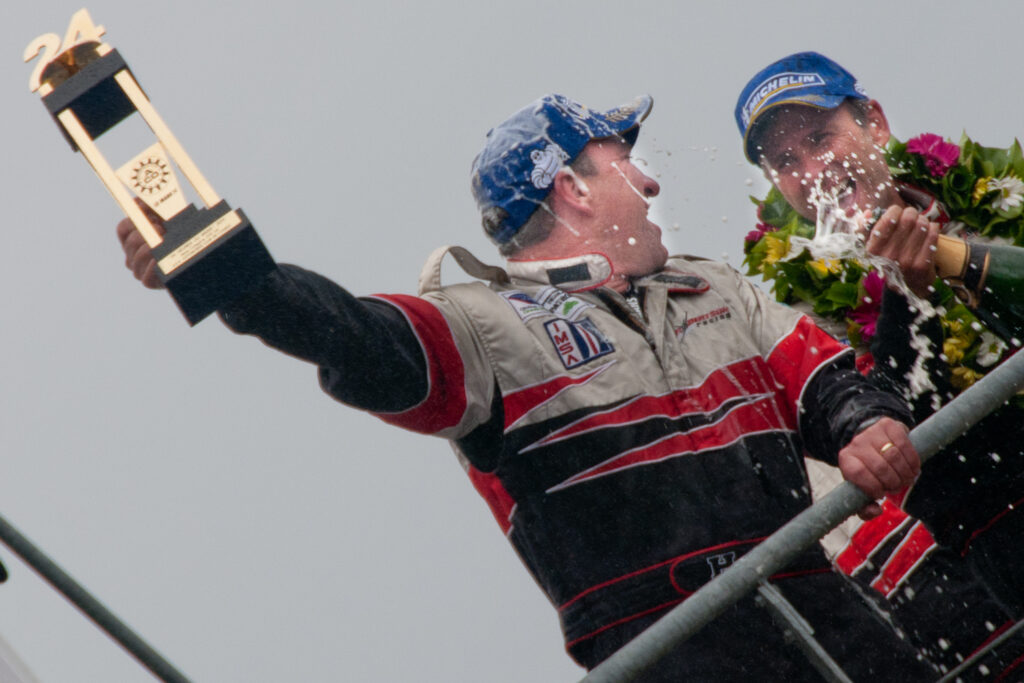
From the grit and determination it took to race as a privateer to making history as the first American woman to ever podium at Le Mans, Andrea’s story is nothing short of legendary.
Andrea, her late-husband David and David Murry proved that passion, perseverance, and a little bit of Ford GT magic can take on even the toughest competition in endurance racing. Their journey wasn’t just about speed—it was about breaking barriers, defying expectations, and proving that anyone with enough heart can make their mark on motorsport’s biggest stage.
There's more to this story!
Be sure to check out the behind the scenes for this episode, filled with extras, bloopers, and other great moments not found in the final version. Become a Break/Fix VIP today by joining our Patreon.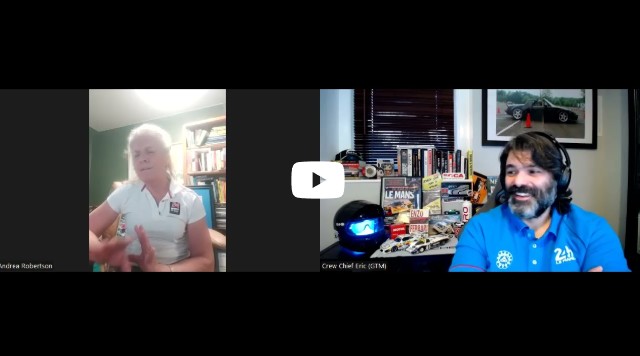
All of our BEHIND THE SCENES (BTS) Break/Fix episodes are raw and unedited, and expressly shared with the permission and consent of our guests.
You can also hear from David Murry about this Le Mans experience from his perspective too. Tune into the episode below!
Tune in everywhere you stream, download or listen!
 |  |  |
We hope you enjoyed this presentation and look forward to more Evening With A Legend throughout this season. Sign up for the next EWAL TODAY!
Evening With A Legend (EWAL)
Evening With A Legend is a series of presentations exclusive to Legends of the famous 24 Hours of Le Mans giving us an opportunity to bring a piece of Le Mans to you. By sharing stories and highlights of the big event, you get a chance to become part of the Legend of Le Mans with guests from different eras of over 100 years of racing.
ACO USA
To learn more about or to become a member of the ACO USA, look no further than www.lemans.org, Click on English in the upper right corner and then click on the ACO members tab for Club Offers. Once you become a Member you can follow all the action on the Facebook group ACOUSAMembersClub; and become part of the Legend with future Evening With A Legend meet ups.


